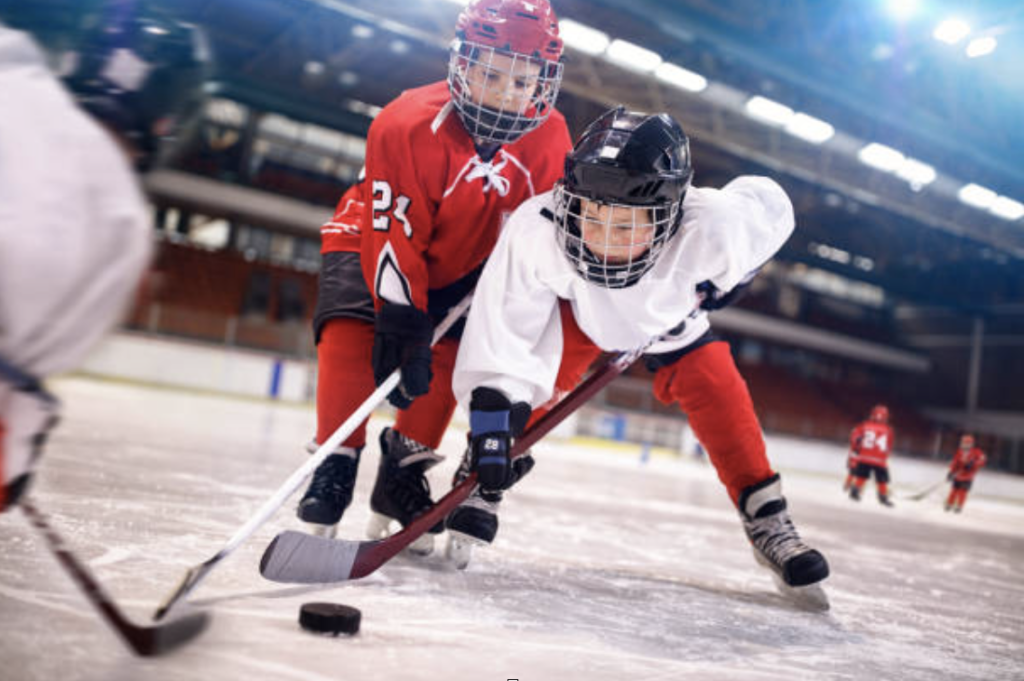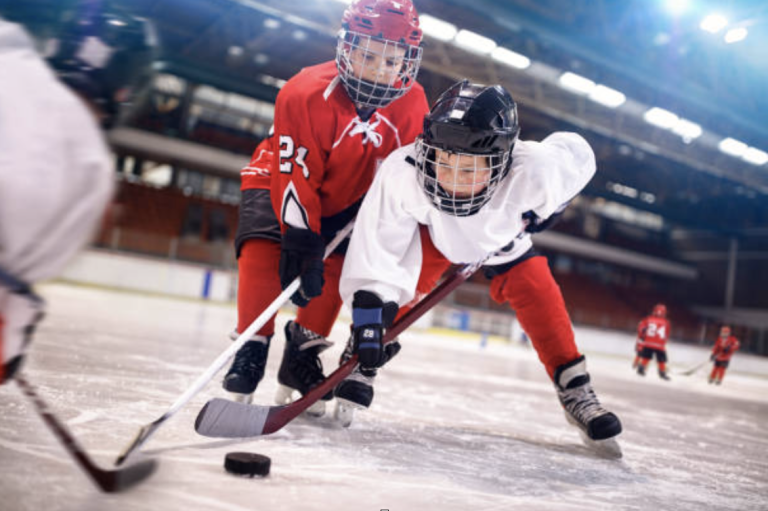
At the highest levels of hockey, from high school to college to the NHL, “checking” is permitted, which entails a player colliding with an opponent to halt his forward movement.
This may result in multiple injuries from players colliding with one another or with the ice surface or the rink’s boards. Even in so-called “no-check” leagues, physical contact is inevitable. Falls are regular, and landing on ice is equally as difficult as landing on concrete.
In addition, because every player carries a stick and wears sharpened skates, accidents are inevitable and may affect the NHL odds played by fans and bettors if the major players are injured.
There is also a high probability that you may be struck by the puck, which is composed of hard rubber and can leave a painful bruise if it hits you in the wrong area. And since hockey includes hard physical activity, muscular pulls and sprains are a risk for players who fail to properly warm up and stretch.
Hockey’s constant action and high-speed team play make it a very popular sport. Despite its enjoyment, hockey poses a very real danger of damage. Patiently follow these tips to ensure your safety.
1. Get Trained Properly
Before stepping into a game, a novice should have received proper training and learned the rules. Employing a coach or personal trainer is always advised. For instance, novices should know how to fall correctly on ice. Falls are a regular part of the game, but practicing the proper way to fall helps avoid spinal cord damage.
One additional skill novices must learn is to not lower or duck their heads during crashes. When you duck your head during a collision, your head absorbs the force of the contact. Head injuries may be avoided by learning how to react effectively after a collision.
Get all the required equipment: Safe Hockey Gear
Before playing hockey, it is essential to have the proper equipment and to know how to put it on and operate it properly. A pair of skates and a helmet are a solid start, but you’ll need to wear much more. We will highlight a few of them below
Helmet: When it comes to avoiding severe injuries, the helmet is the most essential piece of equipment. Helmets must be approved by the Hockey Equipment Certification Council (HECC) and have a complete facemask, chin cup, and chin strap. Ensure that your helmet fits correctly and that the chin strap is fixed and tightened to keep it in place.
Skates: As with helmets, make sure your skates fit properly. Because you will lace them up tightly, improperly sized skates might cause severe foot pain. The toe cup of the skates should be made of steel or strong plastic material. Maintain sharp skates so they function better and are less prone to get snagged in ice ruts.
Shoulder pads, elbow pads, knee pads, and shin pads are all hockey-specific: Soccer and lacrosse equipment will not provide the necessary protection. The lower leg pads (knee and shin) should be made of hard plastic and extend to the top of your skates.
Hockey pants: Hockey pants should reach your knees and include padding in the front, back, sides, upper legs, and stomach.
Hockey Gloves: Hockey gloves should be flexible and protect beyond the wrist.
Athletic supporter and cup: These are in most hockey undershorts but maybe from other sports.
Neck Protector: Neck protection defends against hockey sticks and skate blades. However, other leagues don’t mandate them.
Mouthguards: It protects teeth, lips, cheeks, and tongue and may avoid concussions and jaw fractures.
2. Know the common injuries
Never play if you are in pain. Playing while wounded might prolong the recovery process. If you know the signs of common illnesses, you can decide if you should play or stay home.
Concussions and other head injuries are relatively prevalent. If the player complains of a headache, feels queasy, or is bewildered, he or she must leave the ice.
Additionally, muscle sprains, joint dislocations, and fractures are frequent injuries. If a player is experiencing difficulty moving a joint or persistent discomfort, they should sit out. Bruises should also be anticipated. If the bruise hurts so much that you can’t stand it, it’s best not to play.
3. Be cautious of concussions
As stated before, concussions are one of the most prevalent injuries in ice hockey. However, symptoms may not manifest until hours after the incident. When a player gets a hit to the head on the ice, it is crucial to observe for symptoms in the hours and days after the incident.
The symptoms of a delayed concussion may vary from those of an immediate one. The person may have trouble sleeping, change in behavior, be sensitive to light, or have trouble remembering certain events. Schedule an appointment with a doctor within 48 hours following a head injury, even if there are no signs of a concussion.
4. Get a doctor
Have a doctor that specializes in sports injuries. Typically, leagues will have a physician on-site to treat any injuries that arise during a game. However, some injuries may not manifest symptoms until after the game.
A physician with experience in sports injuries will be able to rapidly detect ailments and provide treatment recommendations. Occasionally, injuries may be treated at home using bandages and ice.
Another time, a referral to a specialist is required. Keep in mind that doctors don’t simply cure injuries; they also assess the player’s general health to ensure he can play ice hockey safely.
Conclusion
If the possibility of head injuries and collision-related bruises makes you uneasy, ice hockey may not be your preferred activity. Take note of and consider the safety precautions mentioned above. It will make it easier for you to play hockey games safely.




